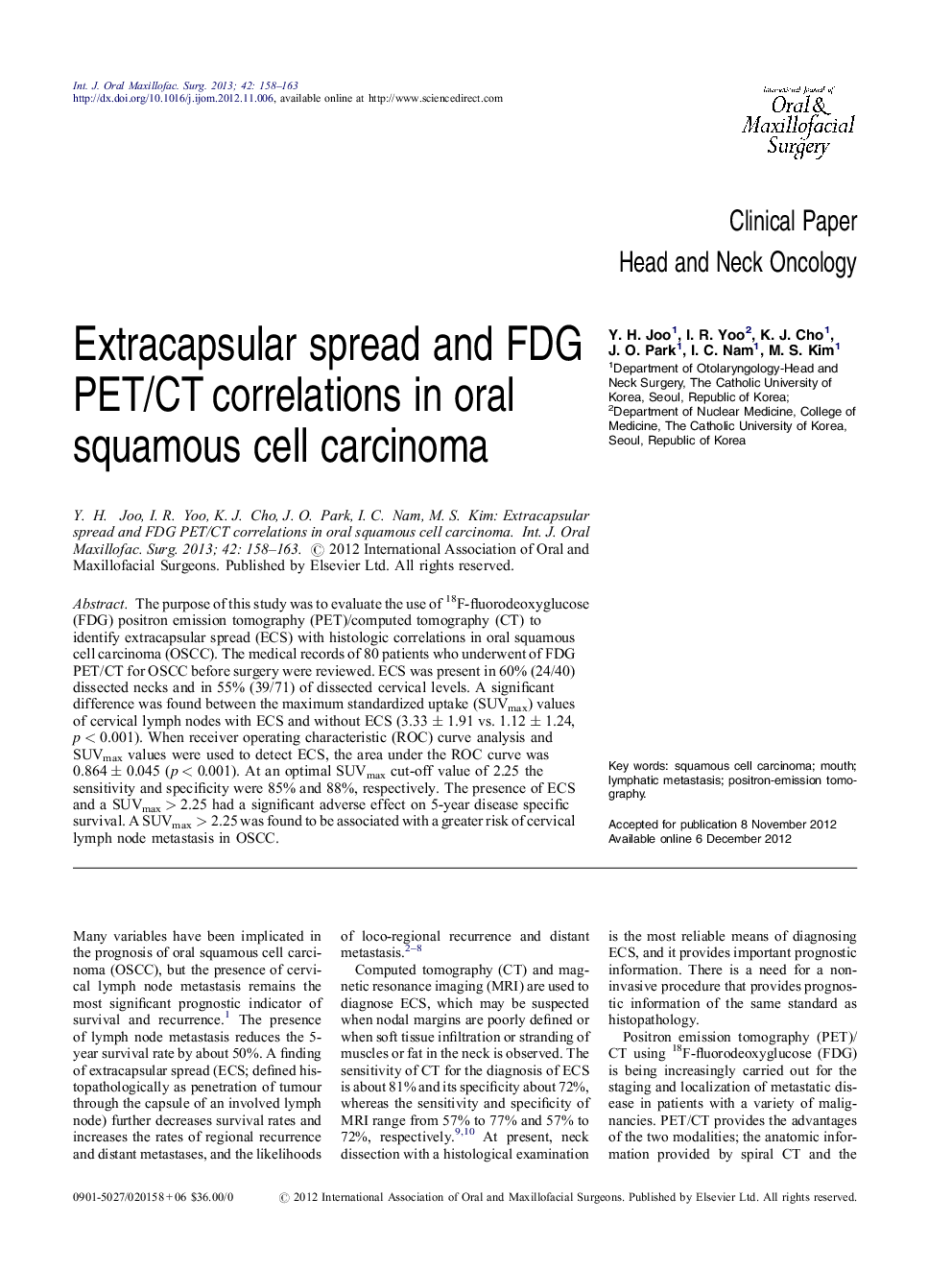| Article ID | Journal | Published Year | Pages | File Type |
|---|---|---|---|---|
| 3132910 | International Journal of Oral and Maxillofacial Surgery | 2013 | 6 Pages |
The purpose of this study was to evaluate the use of 18F-fluorodeoxyglucose (FDG) positron emission tomography (PET)/computed tomography (CT) to identify extracapsular spread (ECS) with histologic correlations in oral squamous cell carcinoma (OSCC). The medical records of 80 patients who underwent of FDG PET/CT for OSCC before surgery were reviewed. ECS was present in 60% (24/40) dissected necks and in 55% (39/71) of dissected cervical levels. A significant difference was found between the maximum standardized uptake (SUVmax) values of cervical lymph nodes with ECS and without ECS (3.33 ± 1.91 vs. 1.12 ± 1.24, p < 0.001). When receiver operating characteristic (ROC) curve analysis and SUVmax values were used to detect ECS, the area under the ROC curve was 0.864 ± 0.045 (p < 0.001). At an optimal SUVmax cut-off value of 2.25 the sensitivity and specificity were 85% and 88%, respectively. The presence of ECS and a SUVmax > 2.25 had a significant adverse effect on 5-year disease specific survival. A SUVmax > 2.25 was found to be associated with a greater risk of cervical lymph node metastasis in OSCC.
